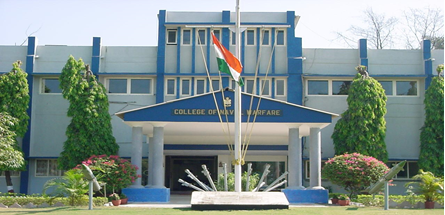This was published in the Navy Foundation Magazine ‘Quarterdeck’, 2015 issue:
I have had the rare distinction, in the Indian Navy, of having been the Director of all three Maritime Warfare Centres (MWCs) and the College of Naval Warfare (CNW; now NWC or Naval War College). To the best of my knowledge, the Navy hasn’t had another officer who was given all these appointments together. If I count the time I spent in Spain for writing the operational specifications of Action Speed Tactical Trainer (Vizag), a little more than one-fourth of my time in the Navy has been spent in training others in tactics, operations and strategy.
Until the time I left the Navy in end Feb 2010, with the exception of two officers: VAdm SCS Bangara and VAdm P Chauhan, no one commanding these operational training units in the Western Naval Command (the sword arm of the Navy as we fondly call it) ever made it to their next ranks (indeed, these two officers too made to their next ranks in spite of being posted there and not because of it). However, these institutes continue to do yeoman service to the professional upbringing of officers of the executive branch.
My repeated tenures in MWCs reminded me of this classical violinist giving a solo-performance on stage. Every time he finished, someone from the audience shouted: Encore and so the violinist played the piece again. After these encores happened a number of times, the exasperated violinist shouted back, “Encore, encore, encore; just how many times you want me to re-play the piece?” At this, one man in the audience shot back, “Until you get it right”. I don’t know whether I finally got it right or not, but, after Feb 2010, I did not hear any more encores.
Why Tactical Trainers? The fact is that it is really very expensive being at sea; it is much costlier training at sea. When I was the Ship’s Commander of the aircraft carrier Viraat, a quick calculation brought home the point to me that it was costing the nation Rupees Two Crores a day to have her at sea. If we now start adding to it other costs such as for having other ships, aircraft and submarines at sea, and the cost of missiles and other ammunition, one would know the extent of how really expensive it is. And if now we add to these figures the cost of mistakes including lives that may be lost due to such mistakes, we come up with costs that are simply forbidding. Tactical Trainers are, therefore, excellent and very cost-effective alternatives to going to sea. General Patton’s “The more you sweat in peace, the less you bleed in war” aptly sums up the rationale of the Tactical Trainers; indeed, that was the motto of one of the MWCs I commanded, written in large letters above the Large Scale Display (LSD).
In Vizag’s ASTT (Action Speed Tactical Trainer) and MWC (Mumbai), I was able to sell the idea to the Fleet Commanders and their staff to even try out their FXPs (Fleet Exercise Programmes) in the Tactical Trainer with the Ship’s command teams before proceeding to sea so that precious time at sea won’t be wasted on such signals as ‘Where are you going?’ and ‘Read Back your station’. The FXPs could then concentrate on more professional aspects.
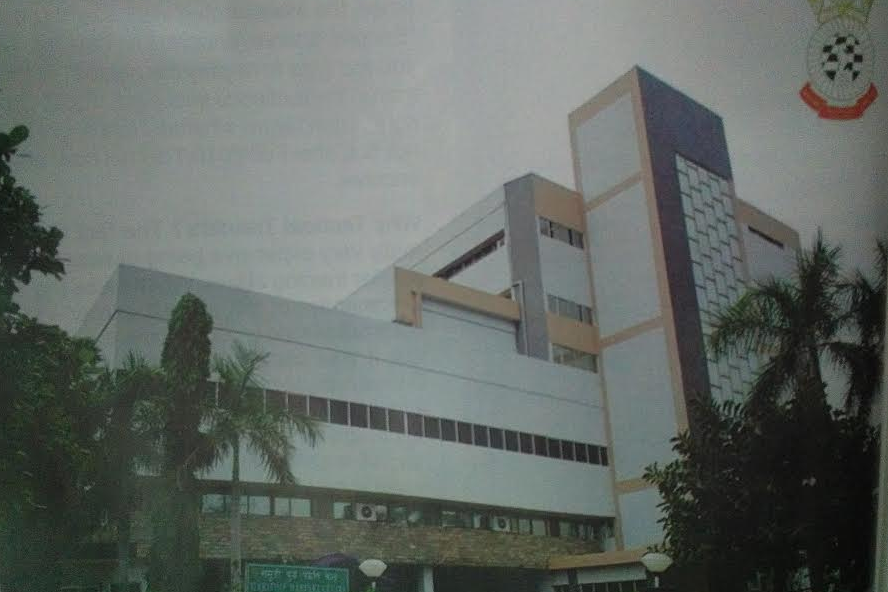
MWCs conduct training and games at varied levels: from the operators level to the highest operational level as in Shiksha series. Games for operators are generally procedural including communication procedures.
A major tactical game between Blue and Red normally takes about two days of setting up and testing. A typical game starts with briefings by Blue and Red OsTC (Officers in Tactical Command) of their respective forces. The MWC staff would normally not interfere with the concepts and tactics being tried out. However, they would assist in verifying the soundness of plans and their conformity with existing concepts and tactics.
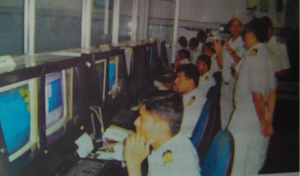
When the ships’ command teams with their operators occupy the cubicles allotted to them, the MWC Control Team begins the game. MWC Control Team is forever concerned about progressing the game in such a way so that not only the conops and tactics as planned are tried out but also that appropriate lessons are learnt. Hence, they would run the game at various speeds (including 16 times normal speed) and also jump to pre-defined game times. Often the actual encounter or engagement between the forces is not as significant as the actions and events leading up to it. Sometimes, a game is frozen to give the OsTC chance to re-appreciate the situation.
A common debrief is held at the end of the game. As the game is replayed for the benefit of the forces, screen shots are presented of important situations and the Control and forces can exchange views on what, where, how and why of situations. MWCs have Subject Matter Experts (SMEs) on every field and they guide and advise the Command Teams on desired improvements and lessons learnt.
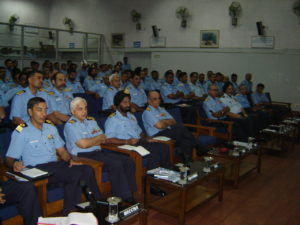
MWCs are also employed for analyzing, briefings and debriefings of major exercises such as SPRINGEX, SUMMEREX and TROPEX. All the tracks of all units taking part in the exercise – ships, aircraft and submarines – are reproduced on ASTT as per the reports received from the units and all encounters and engagements are analysed. The hot wash-ups and debriefs of these exercises often comprise big-wigs from Naval and Command Headquarters. These are very challenging tasks for the MWC staff as often the time available after all narratives and tracks arrive is not more than 36 hours before a hot wash-up is held. On the morning of the debrief you stand at the podium bleary-eyed and fatigued but satisfied as a cow who has been milked for enormous quantities. The trick, during the debriefs, is not just to keep yourself awake but also to keep everybody’s attention through clever use of humour and even apt cartoons so that desired lessons learnt will sink in with alacrity. MWC staff has to also keep strict impartiality and objectivity. One has to also keep the auditorium cool since heated discussions often follow the debrief by MWC.
In one of the exercises, curiously, a major ship of Red force, insisted that they had not only detected Viraat (of the opposite Blue force) on radar but had visually sighted it (“clear lower decks was sounded and the entire ship’s company saw Viraat”) when Viraat was as many as 380 nautical miles away. Even after the tracks were shown, the ship insisted that they had seen Viraat. Then there was another time when a ship, in her narrative, single-handedly demolished the complete opposite fleet whereas our analysis showed that she came nowhere near engagement ranges.
Incidents like these are fascinating enough to conclude that there are many who like to do during debriefs what they couldn’t do at sea.
I also endeavoured to help utilize MWCs for limited war-gaming of new concepts and tactics either thought about by MWC staff or by INTEG (Indian Naval Tactical Evaluation Group). During my tenures we did considerable brainstorming and used to not only question the validity of old tactics and concepts but also come up with new ones. One of our recommended concepts was later adopted by the Fleet as viable concept and changed the way we looked at carrier formations. This made us very happy and satisfied. Another significant paper of MWC (MB) was presented in the Commander’s Conference, accepted and approved in totality and that’s how the Indian Navy started with the institution of a Doctrine and Concept organization called MDCC (Maritime Doctrine and Concept Centre) under the FODC (Flag Officer Doctrines and Concepts). We at MWC felt proud that a concept devised by us was adopted navy-wide.
Since MWCs have large auditoria to seat about 120 to 140, these were also utilized to host visiting dignitaries of India and abroad. We learnt a lot from these interactions, whether it was debriefs of Malabar series of exercises with the US Navy or even with the PLA (Navy) Chief Admiral Wu Shengli. The latter helped me in having a most successful visit of the NHCC (Naval Higher Command Course), when I was director, CNW to China (the first of its kind ever).
That brings me to my tenure in CNW (the College of Naval Warfare). I was there as a Director for nearly three years before my retirement. I had decided, on joining, to raise the level of training (of mainly operational art and strategy) by a few notches. This is despite not having even one fourth of the officers as directing staff. To give you a feel of how scarce the staff was, I am reminded of the visit of Lieutenant General Mohanty, the then Commandant of Army War College (at Mhow, MP). He said that he had heard a lot of the quality of training at CNW and wanted to visit and see for himself. As his car arrived at the portico, two of my officers (from the executive branch) stood next to me to receive him. Later, whilst having coffee with me in my office, he expressed a desire to “meet the rest of your officers”. When I told him that there was no “rest” and had seen them all at the portico, he nearly fainted out of disbelief. Between one DS (the other being a sort of XO) and me we managed the complete NHCC and never made the student officers feel they were was anything wanting. We conducted seminars, panel discussions and invited the very best to deliver talks to them including Ambassadors and even the former President Dr APJ Abdul Kalam.
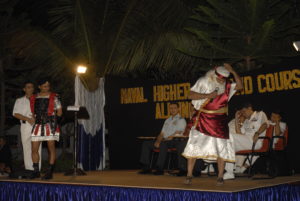
During my tenure we introduced the study of the Peloponnesian War for the NHCC. I invited former Navy Chief Admiral Arun Prakash to deliver a talk to the officers on the War (of course before all talks, the officers are prepared to receive these talks appropriately through self-study, presentations between themselves and by the DSs (in this case me and one more). A few days before Admiral’s talk, I met him in Varuna Mess in New Delhi. He was re-reading books on Peloponnesian War that he had last read when he was a student at NWC, USA. He said having a smattering of the subject was one thing but facing bright students of the rank of Captain (and equivalents in the Army, IAF and CG) required in-depth study. When he delivered his talk, the extent of his preparation was evident. I saw Deputy Chiefs, Fleet Commanders and other senior officers arriving at CNW to deliver talks with assiduous preparation. I think that’s the real strength of this fine institute of highest training in the Navy; the felt need by senior hierarchy to prepare the officers for higher responsibilities.
It was extremely satisfying to get the feedback from the students after leaving CNW. I met one of them in Naval War College, Rhode Islands, USA, when I accompanied the CNS for the Sea Power Symposium there. He was undergoing the Naval Command Course there and he openly admitted that he learnt more and better at CNW than there. Another former student phoned me after completing his NDC (National Defence College) course and told me with pride that he conveyed to the Commandant of NDC that the level and quality of speakers at CNW was much higher than even at NDC.
With the resources (including officer manpower) that we had, it was a tough going both in MWCs and CNW. However, the best reward that you ever get is accolades like these from those that you helped train. These are enough to last a lifetime considering that – as the saying goes – men give their lives in battle for merely two inches of ribbon.
